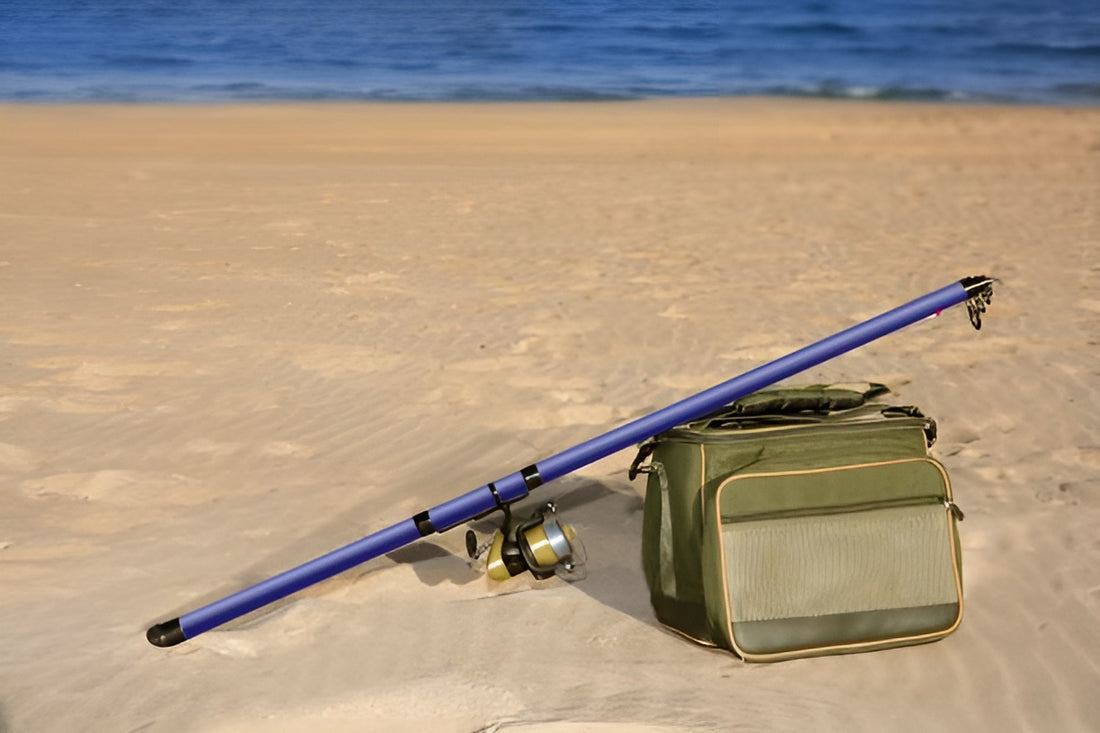When it comes to surfcasting, having the right fishing reel is crucial. A high-quality reel not only enhances your fishing experience but also improves your chances of success. With so many options available in the market, choosing the perfect reel can be a daunting task.
In this expert guide, we will walk you through the essential factors to consider when selecting a fishing reel for surfcasting. Whether you're a beginner or an experienced angler, this comprehensive guide will help you make an informed decision.
Understand Your Fishing Style
Before diving into the details, it's important to understand your fishing style. Surfcasting involves casting your line from the shoreline into the surf, targeting fish that inhabit the coastal areas.
It requires a sturdy and reliable fishing reel that can handle the challenges of saltwater fishing. Knowing your fishing style will help you narrow down your options and choose a reel that aligns with your specific needs.
Consider the Reel Type
There are several types of fishing reels available for surfcasting, each with its own advantages and disadvantages. The main reel types to consider are:
- Spinning Reels: Spinning reels are popular among surfcasters due to their versatility and ease of use. They feature a fixed spool and are suitable for both beginners and experienced anglers. Spinning reels offer excellent casting distance and can handle a wide range of fishing conditions.
- Baitcasting Reels: Baitcasting reels are known for their precision and control. They allow for accurate casting and are ideal for targeting larger fish species. Baitcasting reels require more skill to operate compared to spinning reels, so they are better suited for experienced anglers.
Determine the Reel Size
The size of the fishing reel is an important consideration, as it affects both the line capacity and the overall weight of the setup. For surfcasting, larger reels are generally preferred, as they can hold more line and provide better casting performance.
Look for reels with a higher line capacity, typically measured in pounds or yards, to ensure you have enough line to tackle the distance and depth you're targeting.
Check the Gear Ratio
The gear ratio of a fishing reel determines the speed at which the line is retrieved. A higher gear ratio means a faster retrieval rate, which can be beneficial when reeling in large fish or when using lures that require quick action.
For surfcasting, a gear ratio of around 4:1 to 6:1 is commonly recommended, as it provides a good balance between power and speed.
Consider the Construction and Materials
Since surfcasting involves saltwater fishing, it's essential to choose a reel that is corrosion-resistant and built to withstand the harsh marine environment.
Look for reels made from durable materials such as aluminum or stainless steel, as they offer better protection against corrosion.
Additionally, consider reels with sealed bearings and waterproof drag systems to prevent saltwater intrusion and ensure smooth operation.
Evaluate Drag System Performance
The drag system of a fishing reel controls the amount of resistance applied to the line when a fish pulls it. A smooth and reliable drag is crucial for surfcasting, as it allows you to tire out the fish without risking line breakage.
Look for reels with a strong and adjustable drag system that can handle the power of saltwater gamefish. Carbon fiber drag systems are highly recommended for their durability and sensitivity.
Test the Reel's Casting Ability
Casting distance and accuracy are essential factors for surfcasters. A reel with good casting ability can reach greater distances, allowing you to target fish beyond the breaking waves.
To cast your fishing line better, look for reels with long spools, smooth shapes, and anti-tangle systems. Additionally, consider the weight of the reel, as a lighter setup can help reduce fatigue during long casting sessions.
Read Reviews and Seek Recommendations
To gather more insights and real-world experiences, it's beneficial to read reviews and seek recommendations from fellow anglers or fishing communities
Online platforms, fishing forums, and social media groups can provide valuable information about the performance and reliability of different fishing reels.
Pay attention to reviews that specifically mention surfcasting, as this will give you a better understanding of how well a particular reel performs in those conditions.
Set a Realistic Budget
Fishing reels come in a wide price range, and it's important to set a realistic budget based on your needs and preferences.
While high-end reels often offer advanced features and superior durability, there are also reliable options available at more affordable price points.
Consider your fishing frequency, skill level, and long-term goals to determine the right balance between quality and price.
Warranty and Customer Support
Lastly, don't overlook the importance of a good warranty and customer support. A reputable brand that stands behind its products will provide peace of mind and assurance in case of any manufacturing defects or issues with the reel.
Look for manufacturers that offer generous warranties and have responsive customer support channels to ensure a smooth and satisfactory fishing experience.
Frequently Asked Questions
What is surfcasting?
Surfcasting is a fishing technique where anglers cast their lines from the shoreline into the surf or breaking waves in order to catch fish that inhabit coastal areas. It is a popular method for targeting a variety of species, including surfperch, striped bass, redfish, and more.
What kind of reel is best for surfcasting?
The best reel for surfcasting depends on individual preferences and fishing conditions. However, spinning reels are commonly preferred due to their versatility, ease of use, and ability to handle a wide range of fishing situations. They offer good casting distance and are suitable for both beginners and experienced anglers.
What reel size should I choose for surfcasting?
When choosing a reel size for surfcasting, it's generally recommended to go for larger reels that can hold more line. This allows you to cast farther and have enough line capacity to handle bigger fish. Look for reels with a higher line capacity, typically measured in pounds or yards, to meet your specific fishing needs.
What is the gear ratio and why is it important?
The gear ratio of a fishing reel refers to the number of times the spool rotates for each full turn of the reel handle. A higher gear ratio means a faster retrieval rate, which can be advantageous when reeling in fish or when using lures that require quick action. A gear ratio of around 4:1 to 6:1 is commonly recommended for surfcasting, as it offers a good balance between power and speed.
Are there any specific features I should look for in a surfcasting reel?
Yes, there are several features to consider when choosing a surfcasting reel. Look for reels made from corrosion-resistant materials such as aluminum or stainless steel to withstand the harsh saltwater environment. Additionally, consider features like a sealed drag system to prevent saltwater intrusion, long-cast spools for improved casting distance, and adjustable drag for smooth and reliable performance.
How important is the drag system in a surfcasting reel?
The drag system is crucial in a surfcasting reel as it controls the amount of resistance applied to the line when a fish pulls it. A smooth and reliable drag system allows you to tire out the fish without risking line breakage. Look for reels with a strong and adjustable drag system, preferably one made of carbon fiber, which offers durability and sensitivity to handle powerful saltwater gamefish.
Conclusion
Choosing the right fishing reel for surfcasting is a crucial step in optimizing your fishing experience. By considering factors we discussed in this article, you can make an informed decision that aligns with your specific needs and preferences.
With the perfect reel in your hands, you'll be ready to cast with confidence and increase your chances of landing that prized catch in the surf. Happy surfcasting!

